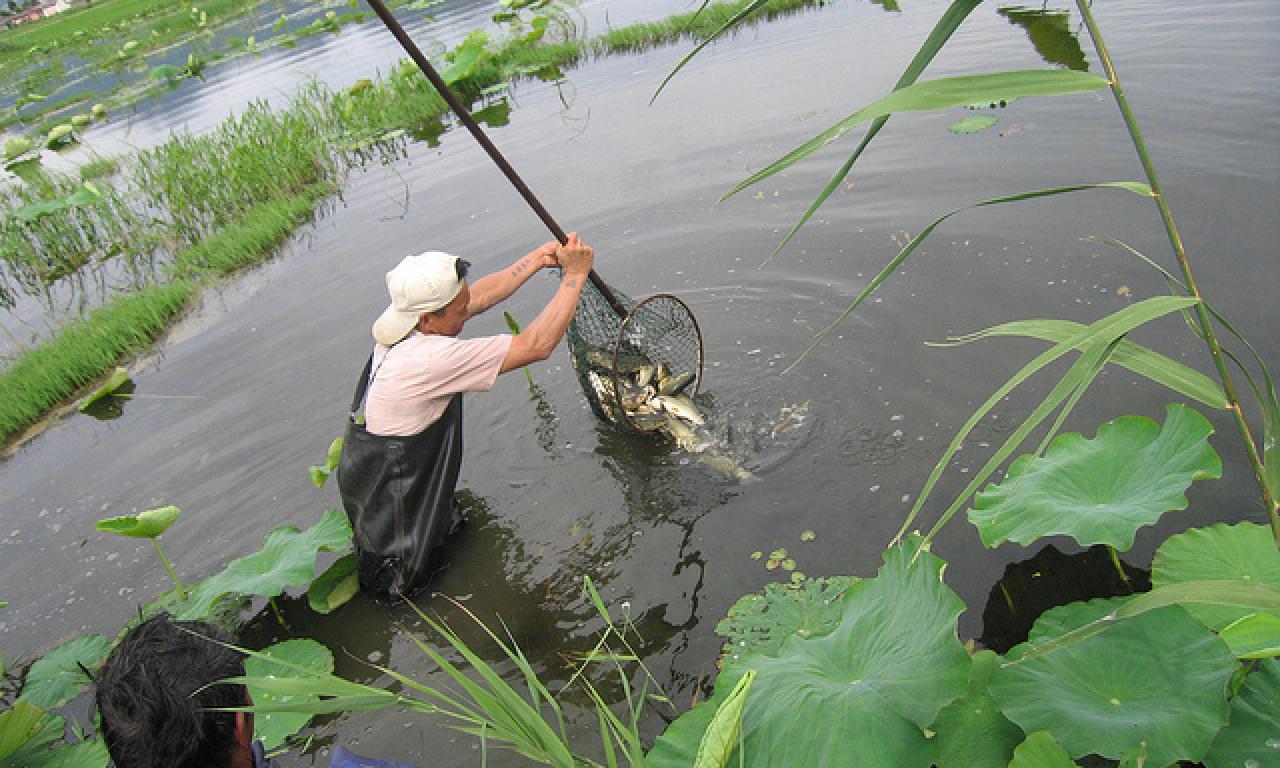
Fish provides an affordable source of protein and essential nutrients for many poor people globally. As demand for fish grows, and now the limits to wild catches are being reached, it is aquaculture that must fill the gap.
Recommended publications
- The role of farmed fish in the diets of the resource-poor in Egypt
- Value chain analysis of the Egyptian aquaculture feed industry
Fish provides an affordable source of protein and essential nutrients for many poor people globally. As demand for fish grows, and now the limits to wild catches are being reached, it is aquaculture that must fill the gap.
The World Bank’s report “Fish to 2030: Prospects for Fisheries and Aquaculture” projects that aquaculture will provide close to two thirds of the world’s fish for human consumption by 2030.
Many countries in the Middle East including Syria, Saudi Arabia, Djibouti, Iraq, Lebanon, Egypt, Sudan, Oman, Yemen, and Libya suffer from nutritional problems including obesity, under nutrition and stunting. More fish could improve food and nutrition security but, fish farming has yet to reach its full potential in the region.
Egypt is the exception. Aquaculture is already making a substantial contribution towards Egypt’s food and nutrition security – more than one million tonnes per year or 75% of the total fish production. Over the past decade, per capita consumption of fish in Egypt has risen from around 15 to 20 kg a year, and most of this can be attributed to aquaculture.
Two main factors have contributed to Egypt’s success. First, the government made a serious commitment to the sector in the 1980s. More than 100,000 ha of land was allocated for aquaculture development and many specialists were trained. Laws covering fish farming were institutionalised and a General Authority for Aquaculture and Fisheries Resources Development that regulates fish farming (and fisheries) and also leases land to fish farms was created.
A water-efficient development strategy was put in place, where aquaculture zones would be supplied with water that had already passed through agricultural irrigation schemes so that pond-based fish farms would be the final users before discharge.
Second, in Egypt, aquaculture has been profitable. While the market price for the primary farmed species, Nile tilapia, is relatively low, pond-based production technology is also low cost. The proximity of aquaculture areas to coastal ports where feed materials are imported, and to markets in Cairo and the Nile delta mean that transaction costs are low. As a result, private-sector small and medium enterprise (SME) aquaculture businesses have consistently been able to make reasonable profits. Importantly, they have done so, not by serving luxury markets, but by supplying more affordable fish, such as tilapia, to poor and middle-class Egyptians. Affluent Egyptians tend to prefer more expensive marine fish or imported fish.
Given the shortage of freshwater in the region, the replication of the Egypt success story in other Arab countries, will be challenging. Marine aquaculture has seen investment in some countries, most notably Saudi Arabia and more recently Oman, but these are almost exclusively for wealthier markets and include shrimp and marine finfish such as barramundi, grouper, seabass, seabream and snapper. A growing demand for caviar has led to the production of farmed sturgeon in Abu Dhabi. These are high-risk, high-reward projects that contribute little to food and nutrition security.
The most obvious route for increasing the regions fish supply is to scale-up aquaculture production in Arab countries such as Egypt and Sudan where there is freshwater. Egyptian aquaculture production could easily be doubled or tripled without using any more water. All it needs is development capital to invest in new technologies and renewed commitment. Saudi Arabia already imports around $50 million worth of pangasius catfish fillets a year from Asia. It could be argued that switching to locally produced tilapia fillets makes more sense, financially because it’s cheaper and ecologically because it can be locally produced.
The other longer-term option is to invest in research to develop new models for Arabian aquaculture. Priority should be given to sustainable production systems with potential to produce large quantities of affordable, nutritious fish. This will require innovative thinking in terms of species and systems. Research is needed into whether sea-water adapted tilapia or a marine equivalent could have potential. Low energy costs should mean that low-cost freshwater or brackishwater recirculation systems could work in the region. However, the new systems need to be benchmarked against other alternative sources of fish supply, including imports, to prove their viability.
Conversations with governments at the MENA level can help foster policies that will boost the potential of aquaculture in the region. WorldFish has more than 15 years of experience in the Middle East working with governments, research institutions and NGOs and is eager to support the future of aquaculture in the region.
The Abbassa Research Center, in Egypt’s Nile delta is well positioned to do so, having become a center of excellence for aquaculture research, hosting a genetics research program that has developed faster growing strains of tilapia and catfish. The Center has played an important role in the development of Egypt’s aquaculture sector and has great potential to support growth in the region and address growing concerns around food and nutritional security.
Originally published in Arab Spatial the Arab Food and Nutrition Security Blog.
Download “Fish to 2030: Prospects for Fisheries and Aquaculture” Below